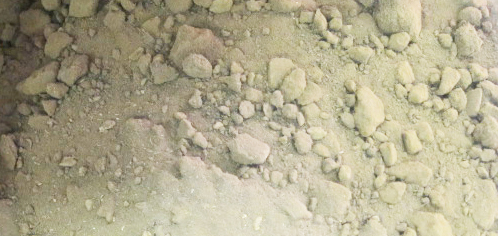Analysis of Hydrolysis Residues

Background
Hydrolysis technologies usually target the production of fuels/chemicals from the cellulose and hemicellulose polysaccharides in the biomass. The solid residue of the process will contain lignin, the portion of the ash that has not been solubilised, and any un-hydrolysed cellulose and hemicellulose.Our Recommendations for Evaluating Hydrolysis Processes
We have a lot of experience in analysing many products (both liquid and solid) from biomass hydrolysis processes. These samples have covered a wide variety of starting feedstocks and hydrolysis processes and conditions. Below we recommend a set of Celignis analysis packages for getting the most detailed data about the whole conversion process:
(1) The Starting Feedstock
We recommend that analysis package P10 - Sugars, Lignin, Extractives, and Ash is used as this will fully remove the extractives prior to the hydrolysis stage meaning that you can be confident that the sugars reported in this package come from lignocellulose.
We would also recommend analysis package P12 - Sugars in Solvent Extract as this will report the amount of water-soluble carbohydrates in the sample. It is likely that water-soluble carbohydrates will be present in the liquid output of many hydrolysis processes and, if their concentrations are not known, it may be incorrectly inferred that such sugars present in the liquid must come from lignocellulose. However, if the water-soluble carbohydrate composition is known then these values can be substracted from the amounts of sugars in the hydrolysis liquid to determine the amount of true lignocellulosic sugars that are present.
Similarly, if you expect that there will be some starch in your sample then we also recommend that analysis package P14 - Starch Content is also undertaken as starch may also be removed and hydrolysed in many hydrolysis processes.
Additionally, if you are interested in the uronic acid composition of the biomass then we recommend analysis package P15 - Uronic Acids is also undertaken.
(2) The Liquid Product from Hydrolysis
For the most detailed results, we would recommend that the liquid output is analysed using analysis packages P13 - Sugars and Oligosaccharides in Solution, P22 - Organic Acids and Furans, and P15 - Uronic Acids. However, if uronic acids are expected to be very low in your original biomass sample then that analysis package may not need to be undertaken.
(3) The Solid Residue from Hydrolysis
As it is likely that most of the extractives will have been removed in the hydrolysis, it may not be necessary to remove or characterise these. Instead, we recommend that analysis package P9 - Lignocelullosic Sugars and Lignin is undertaken to determine the lignocellulosic composition of the residue. We would also recommend that analysis package P3 - Ash Content is also undertaken to see whether the hydrolysis process significantly changes the ash content of the sample. Also, if the fate of the uronic acids is of interest then analysis package P15 - Uronic Acids could be undertaken.
Celignis founder Daniel Hayes has considerable experience in the chemical and near-infrared analysis of residues from hydrolysis processes, in large part due to his participation in the DIBANET research project, funded by the European Union's 7th Framework Programme. That project involved the development of advanced technologies for the production of biofuels and valuable chemicals (including levuinic acid, formic acid, and furfural) from biomass.
Analysis of Hydrolysis Residues at Celignis
Celignis Analytical can determine the following properties of Hydrolysis Residues samples:
Sugars (Monosaccharides)
Sugar Alcohols and Uronic Acids
Lignin and Extractives
- Lignin (Klason)
- Lignin (Klason - Protein Corrected)
- Lignin (Acid Soluble)
- Acid Insoluble Residue
- Extractives (Ethanol-Soluble)
- Extractives (Water-Soluble)
- Extractives (Exhaustive - Water then Ethanol)
- Lignin S/G Ratio
- Extractives (Water-Insoluble, Ethanol Soluble)
- Protein Content of Acid Insoluble Residue
- Carbon Content of Acid Insoluble Residue
- Hydrogen Content of Acid Insoluble Residue
- Nitrogen Content of Acid Insoluble Residue
- Sulphur Content of Acid Insoluble Residue
Amino
Acids
Thermal Properties
- Moisture
- Ash
- Ash (Acid Insoluble)
- Carbon
- Hydrogen
- Nitrogen
- Sulphur
- Oxygen
- Volatile Matter
- Fixed Carbon
- Gross Calorific Value
- Net Calorific Value
- Chlorine
- Ash Shrinkage Starting Temperature (Oxidising)
- Ash Deformation Temperature (Oxidising)
- Ash Hemisphere Temperature (Oxidising)
- Ash Flow Temperature (Oxidising)
- Ash Shrinkage Starting Temperature (Reducing)
- Ash Deformation Temperature (Reducing)
- Ash Hemisphere Temperature (Reducing)
- Ash Flow Temperature (Reducing)
- Thernogram - Under Nitrogen
- Thermogram - Under Air
Major and Minor Elements
Cellulose Content of Hydrolysis Residues
An efficient hydrolysis biorefinery will hydrolyse most of the cellulose present in the biomass, meaning that the cellulose content of the solid residue should be low.Click here to see the Celignis Analysis Packages that determine cellulose content.
Hemicellulose Content of Hydrolysis Residues
In most hydrolysis biorefineries the hemicellulose fraction is hydrolysed from the biomass, either in the pre-treatment stage or in the main hydrolysis reactor. Hence, hemicellulose content in the hydrolysis residue should be low.Click here to see the Celignis Analysis Packages that determine hemicellulose content.
Lignin Content of Hydrolysis Residues
If the cellulose and hemicellulsoe contents of the hydrolysis residue are lower than in the original biomass sample then it would be expected that the lignin content should be increased. This is because the majority of lignin is typically not hydrolysed in the main hydrolysis reactor, however it may have been removed in the earlier pre-treatment.Click here to see the Celignis Analysis Packages that determine lignin content.
Starch Content of Hydrolysis Residues
It would typically be expected that the starch content of hydrolysis residues should be very low as this polysaccharide would have been hydrolysed in the process.Click here to see the Celignis Analysis Packages that determine starch content.
Uronic Acid Content of Hydrolysis Residues
Depending on the severity of the hydrolysis conditions, the uronic acids that were present in the original biomass may either have been hydrolysed or retained within the acid hydrolysis residue. We can determine uronic acid content of liquid output streams from biomass processes as well as the uronic acid content of biomass and solid process residues.Click here to read more about uronic acids and to see the Celignis Analysis Packages that determine uronic acid content.
Enzymatic Hydrolysis of Hydrolysis Residues
We can undertake tests involving the enzymatic hydrolysis of Hydrolysis Residues. In these experiments we can either use a commercial enzyme mix or you can supply your own enzymes.We also offer analysis packages that compare the enzymatic hydrolysis of a pre-treated sample with that of the native original material.
Click here to read more about enzymatic hydrolysis and to see the various analysis packages that we offer.
Ash Content of Hydrolysis Residues
Providing that a large proportion of the ash present in the virgin biomass has not been solibilised in either the pre-treatment or hydrolysis processes, it can be expected that the ash content of the hydrolysis residue should be greater than in the original biomass sample.Click here to see the Celignis Analysis Packages that determine ash content.
Heating (Calorific) Value of Hydrolysis Residues
Lignin has a greater heating value than cellulose and hemicellulose, therefore a hydrolysis residue that contains an increased lignin content, and lesser cellulose and hemicellulose contents, should be expected to have a greater heating value (on a dry mass basis) than the original biomass.However, the moisture content of the residue will be of key importance in determining the effective heating value of the sample.
Click here to see the Celignis Analysis Packages that determine heating value.
Biomethane Potential (BMP) of Hydrolysis Residues
As hydrolysis residues are typically primarily composed of lignin, as well as any residual ash, they are not considered to be suitable feedstocks for anaerobic digestion.Click here to see the Celignis Analysis Packages that determine the biomethane potential (BMP) and here to read more about anaerobic digestion and the most important analytes for this process.
Bulk Density of Hydrolysis Residues
At Celignis we can determine the bulk density of biomass samples, including Hydrolysis Residues, according to ISO standard 17828 (2015). This method requires the biomass to be in an appropriate form (chips or powder) for density determination.Click here to see the Celignis Analysis Packages that determine bulk density.
Basic Density of Hydrolysis Residues
At Celignis we can determine the basic density of some suitable biomass samples. The method requires the biomass to be in an appropriate form (chips) for density determination.Click here to see the Celignis Analysis Packages that determine basic density.
| Previous Feedstock | Next Feedstock |
Go Back to List of Feedstocks.
Energy
Crops
Agricultural Residues and Wastes
Industrial Residues and Wastes
Municipal
Wastes
Biorefinery
Products






